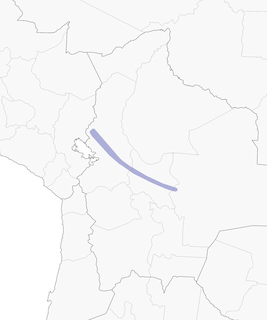Rufous-faced Antpitta Grallaria erythrotis Scientific name definitions
- LC Least Concern
- Names (22)
- Monotypic
Revision Notes
Sign in to see your badges
Species names in all available languages
| Language | Common name |
|---|---|
| Bulgarian | Ръждиволика мраволовкова пита |
| Catalan | xanca de galtes taronges |
| Croatian | jungaški mravar |
| Dutch | Roodoormierpitta |
| English | Rufous-faced Antpitta |
| English (United States) | Rufous-faced Antpitta |
| Finnish | punaposkiluura |
| French | Grallaire masquée |
| French (Canada) | Grallaire masquée |
| German | Rostwangen-Ameisenpitta |
| Japanese | アカガオジアリドリ |
| Norwegian | oransjekinnmaurpitta |
| Polish | kusaczka rudolica |
| Russian | Красноухая питтовая муравьеловка |
| Serbian | Riđolika mravlja pita |
| Slovak | húštinár červenolíci |
| Spanish | Tororoí Carirrufo |
| Spanish (Peru) | Tororoi de Cara Rufa |
| Spanish (Spain) | Tororoí carirrufo |
| Swedish | rostkindad myrpitta |
| Turkish | Kızıl Yüzlü Yerçavuşu |
| Ukrainian | Мурашниця рудощока |
Revision Notes
Harold F. Greeney revised the account. Guy M. Kirwan contributed to the Systematics page. Peter F. D. Boesman contributed to the Sounds and Vocal Behavior page. Leo Gilman copyedited the account.
Grallaria erythrotis Sclater & Salvin, 1876
Definitions
- GRALLARIA
- grallaria
- erythrotis
The Key to Scientific Names
Legend Overview
Introduction
The Rufous-faced Antpitta is a medium-sized Grallaria that is confined to humid montane forests of northern and central Bolivia. Within this very small range, the Rufous-faced Antpitta could be confused only with the larger White-throated Antpitta (Grallaria albigula), which, in contrast, has the entire head deep rufous and has principally gray underparts. The present species has a grayish crown and nape, and is largely buffy below, grading to whitish ventrally. The songs of the two species are quite different, being triple-noted in the Rufous-faced Antpitta, but with only two noted in the White-throated Antpitta. The scant data on reproduction for the Rufous-faced Antpitta come from a single nest observed in captivity. Very little other information is available on the natural history of this species.

- Year-round
- Migration
- Breeding
- Non-Breeding











































